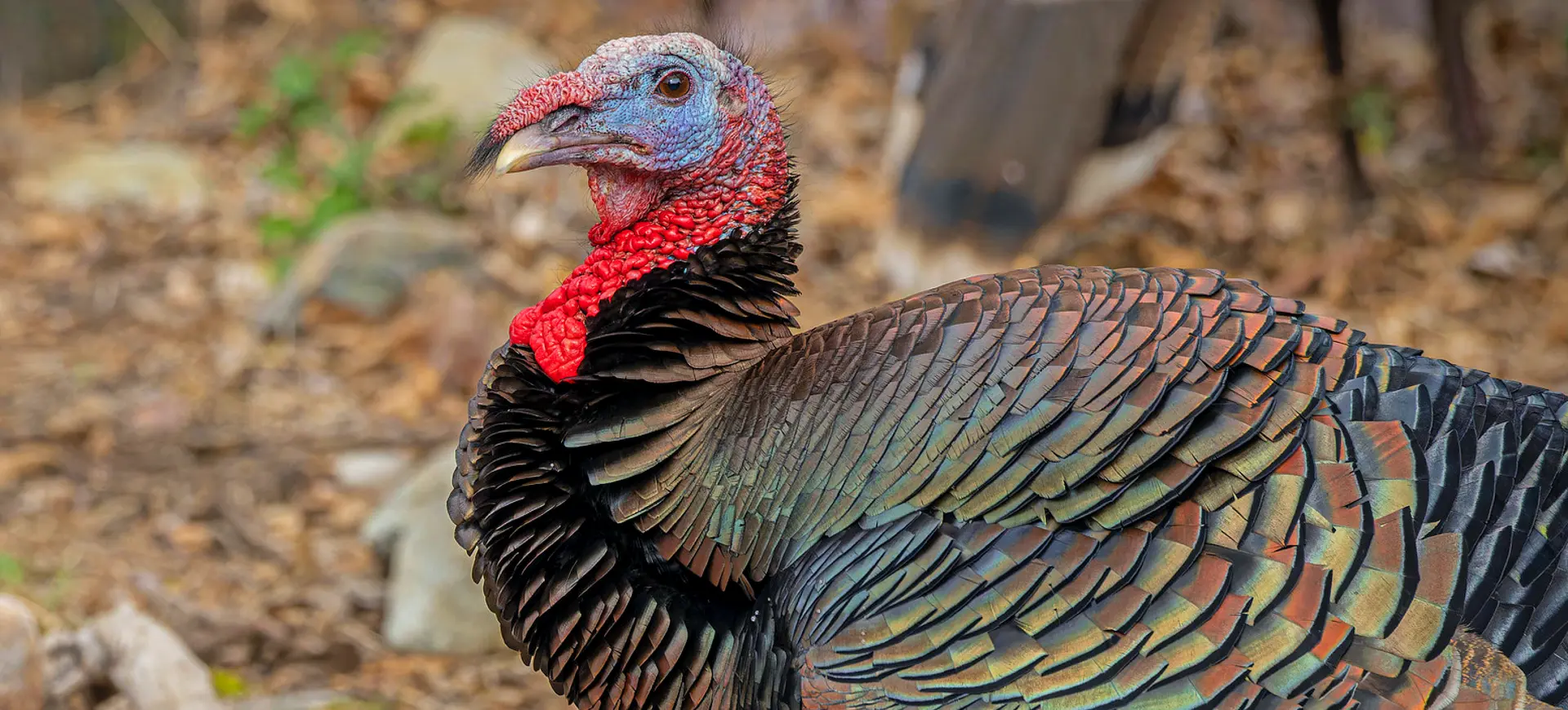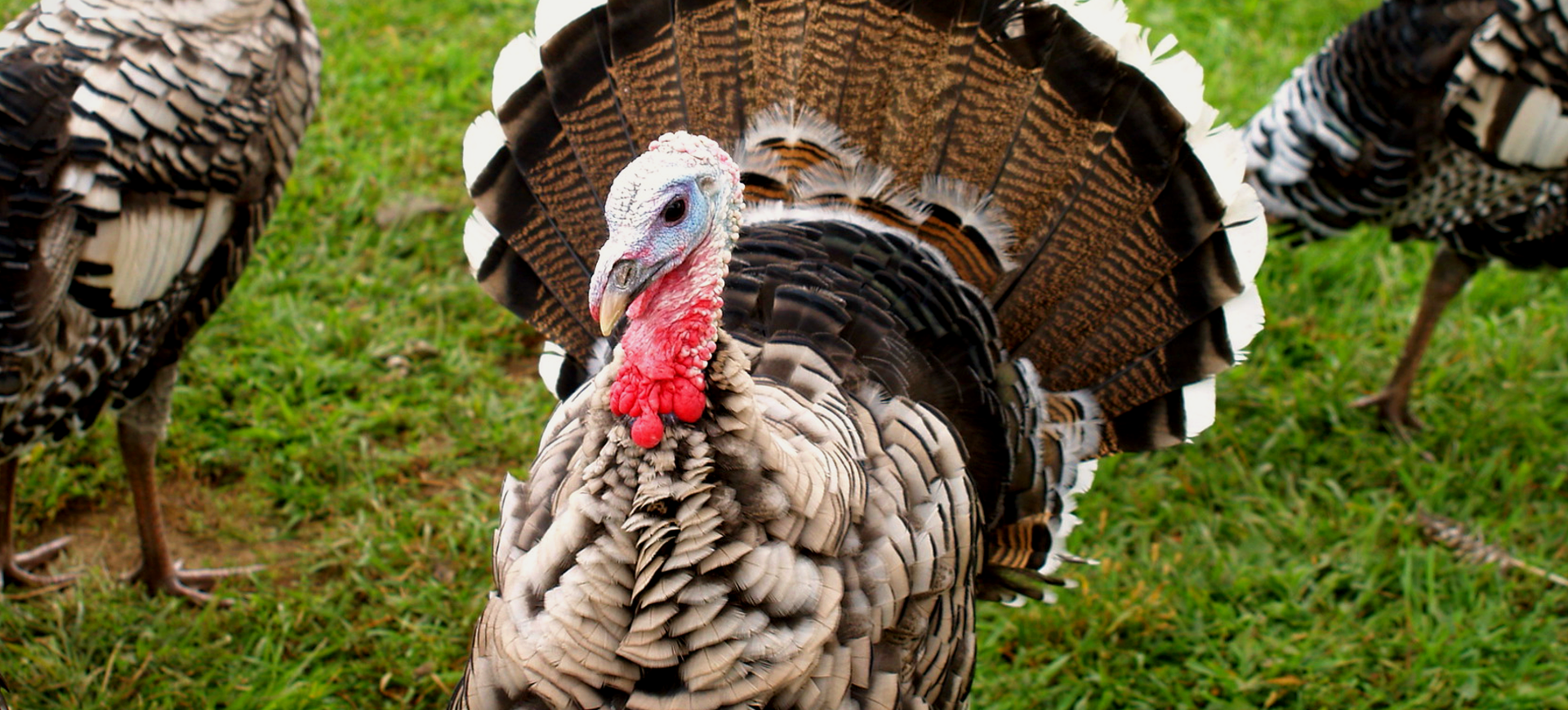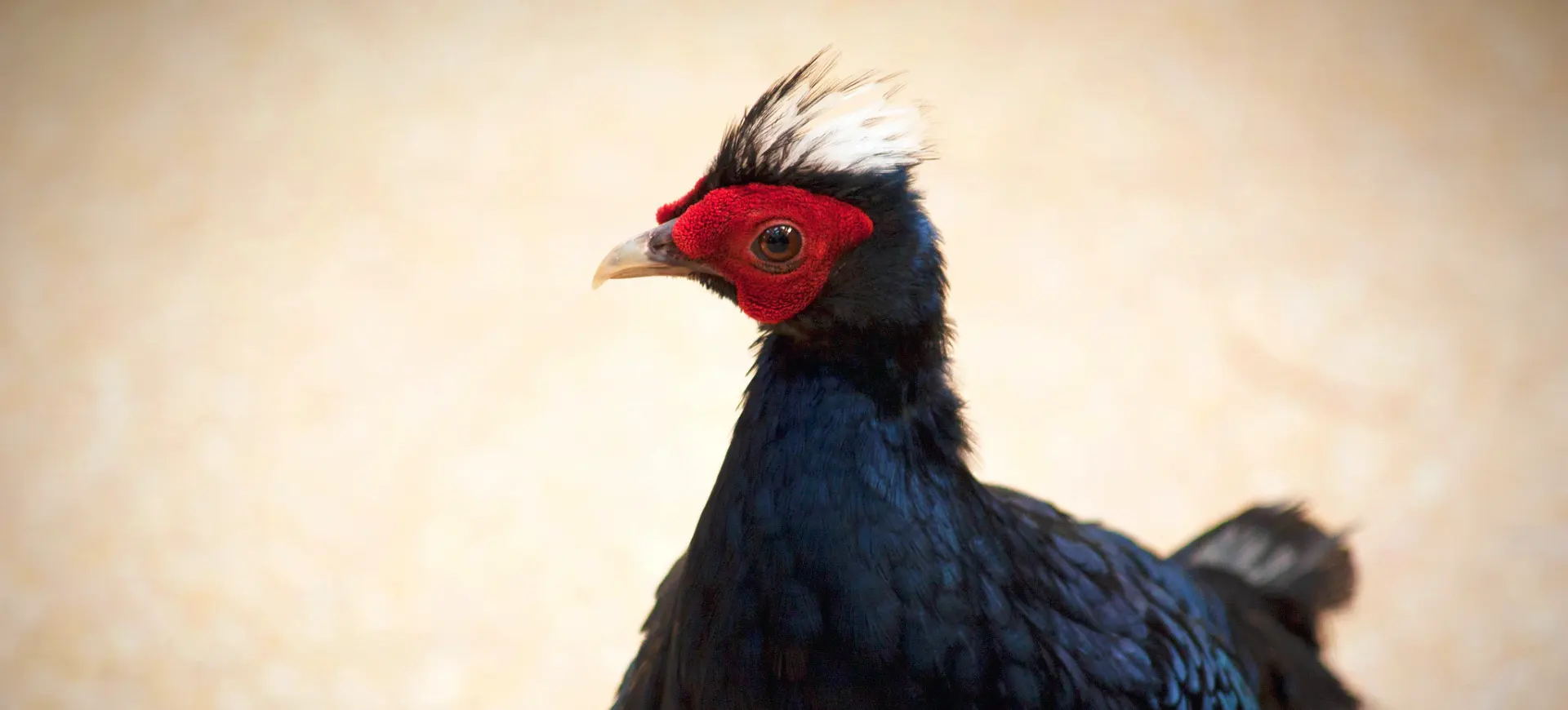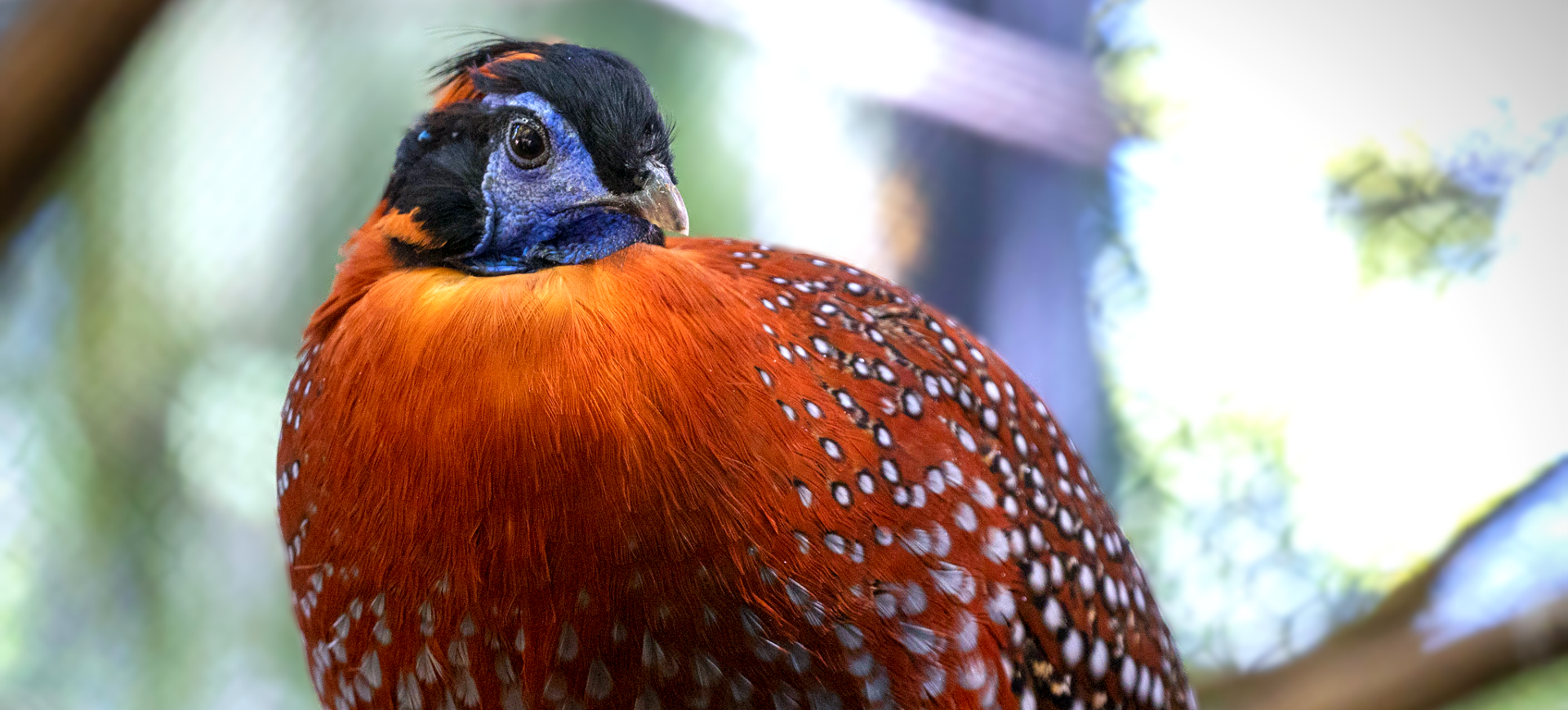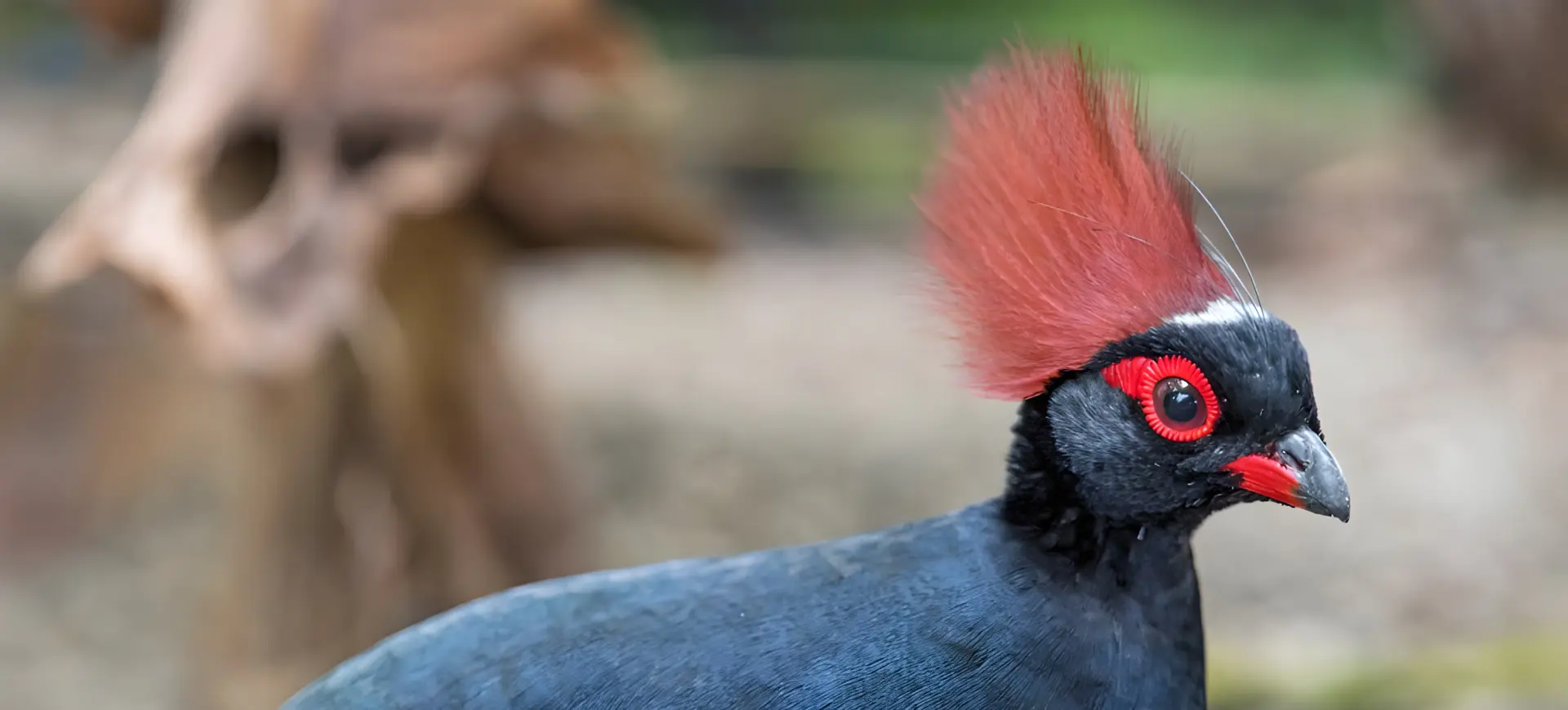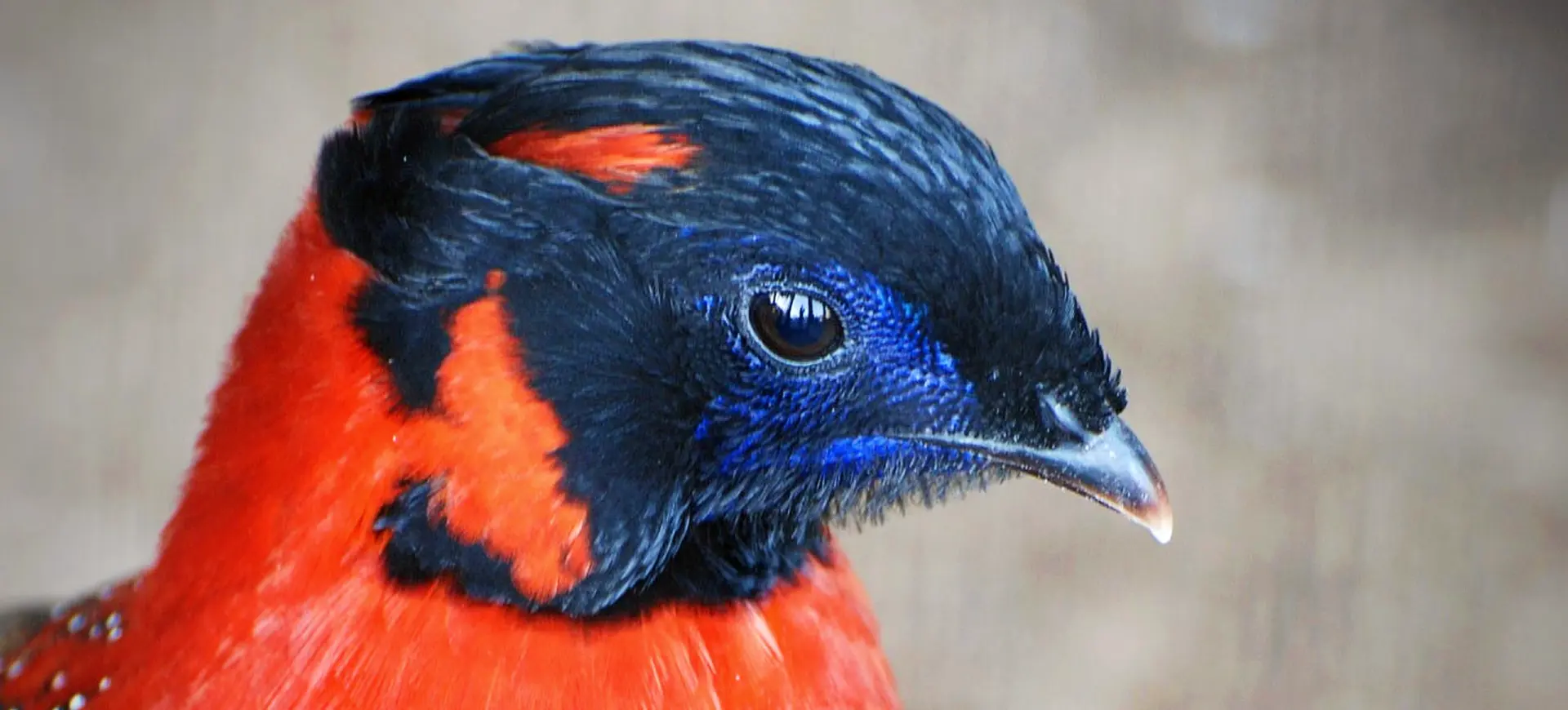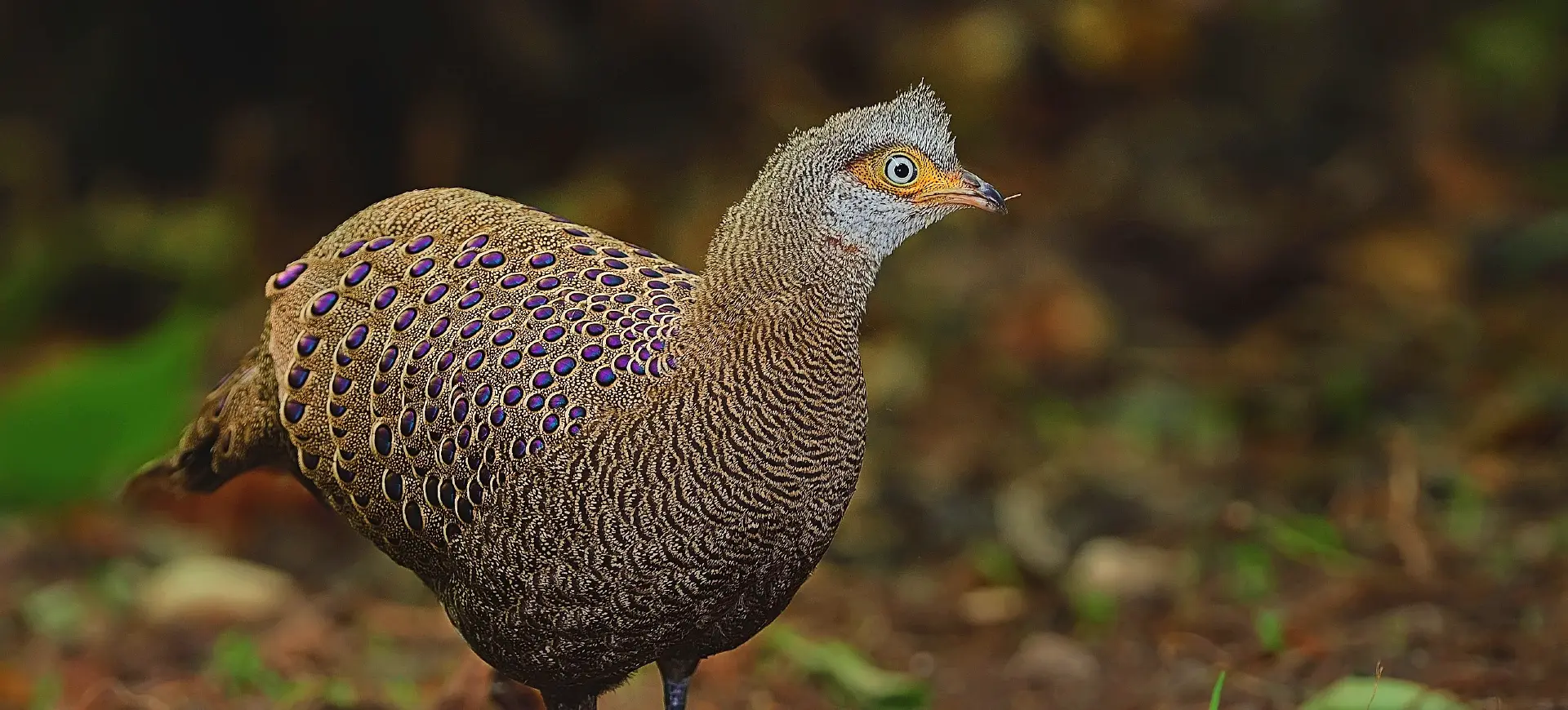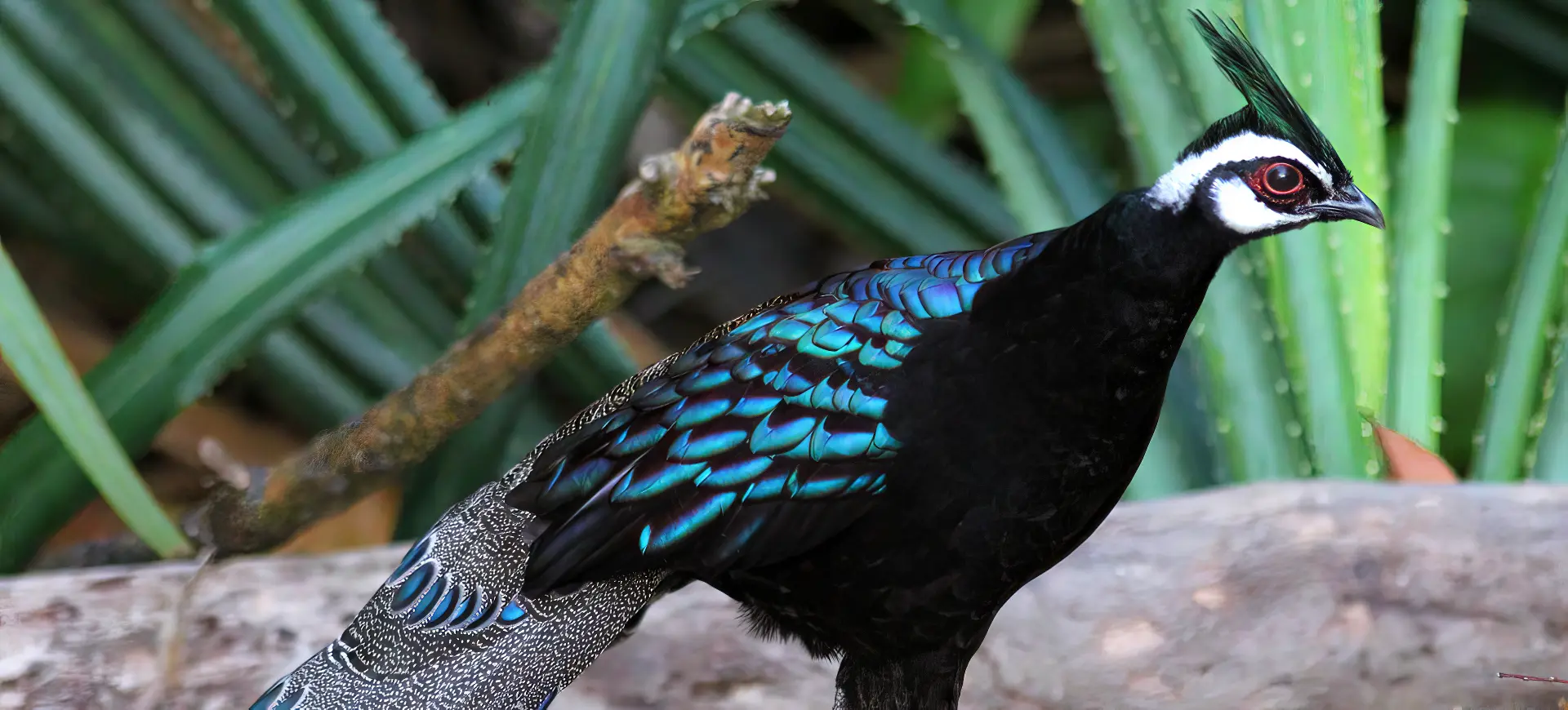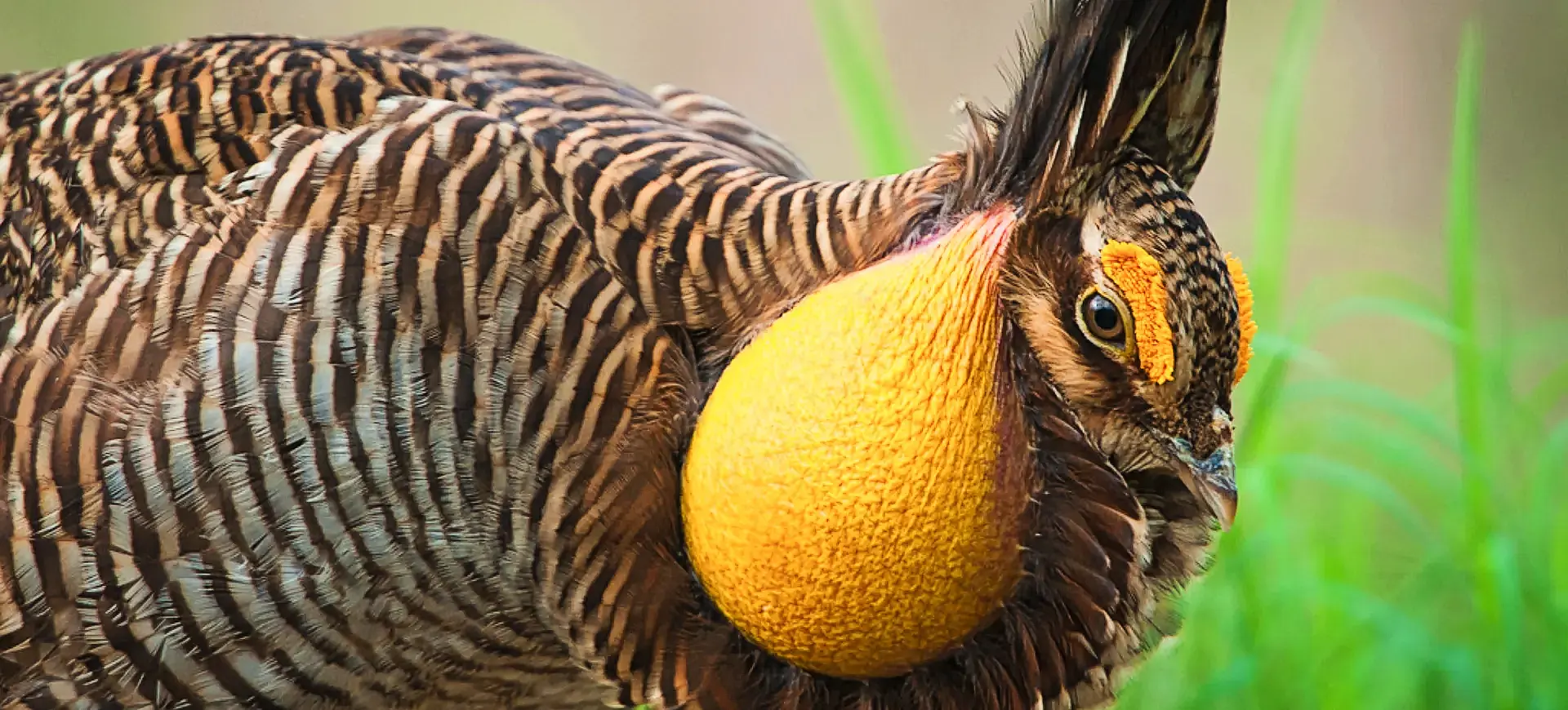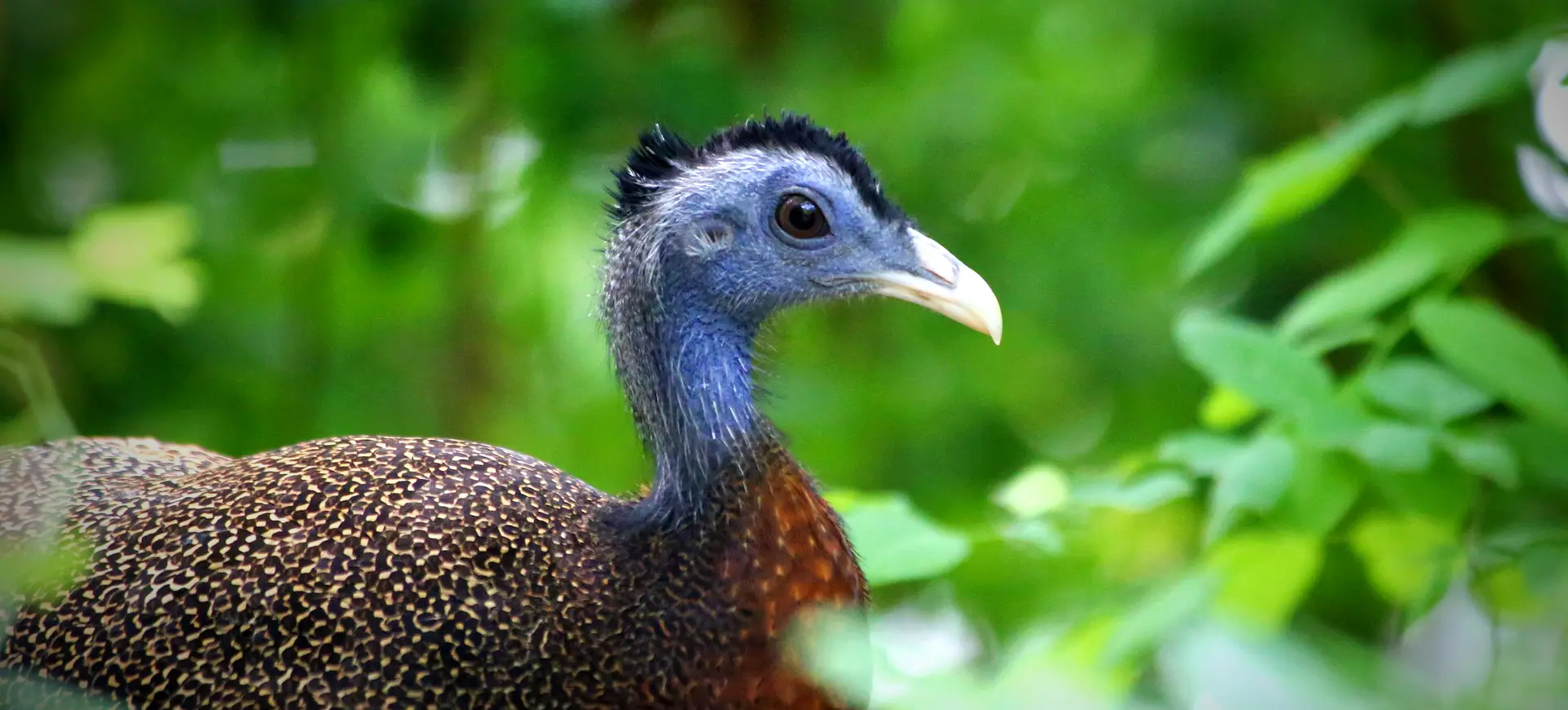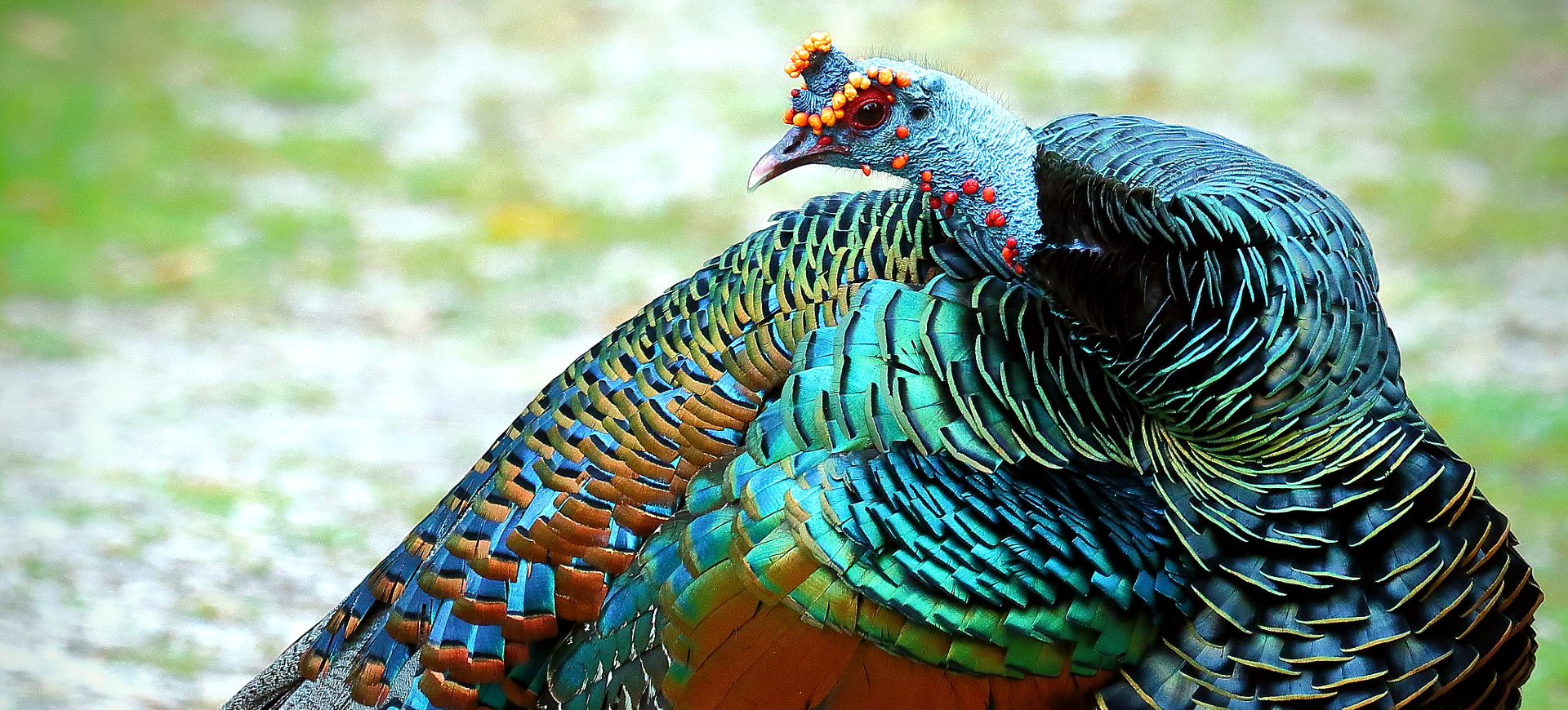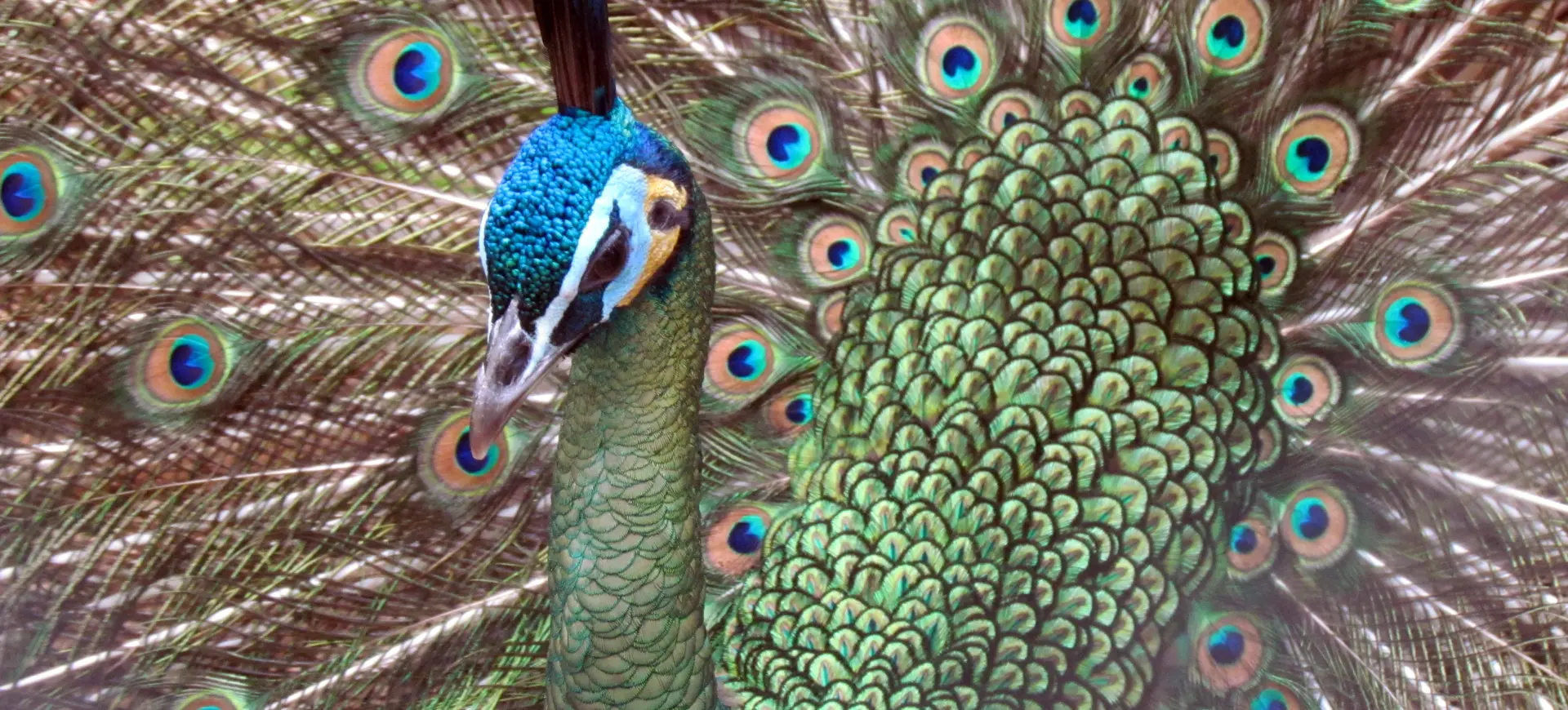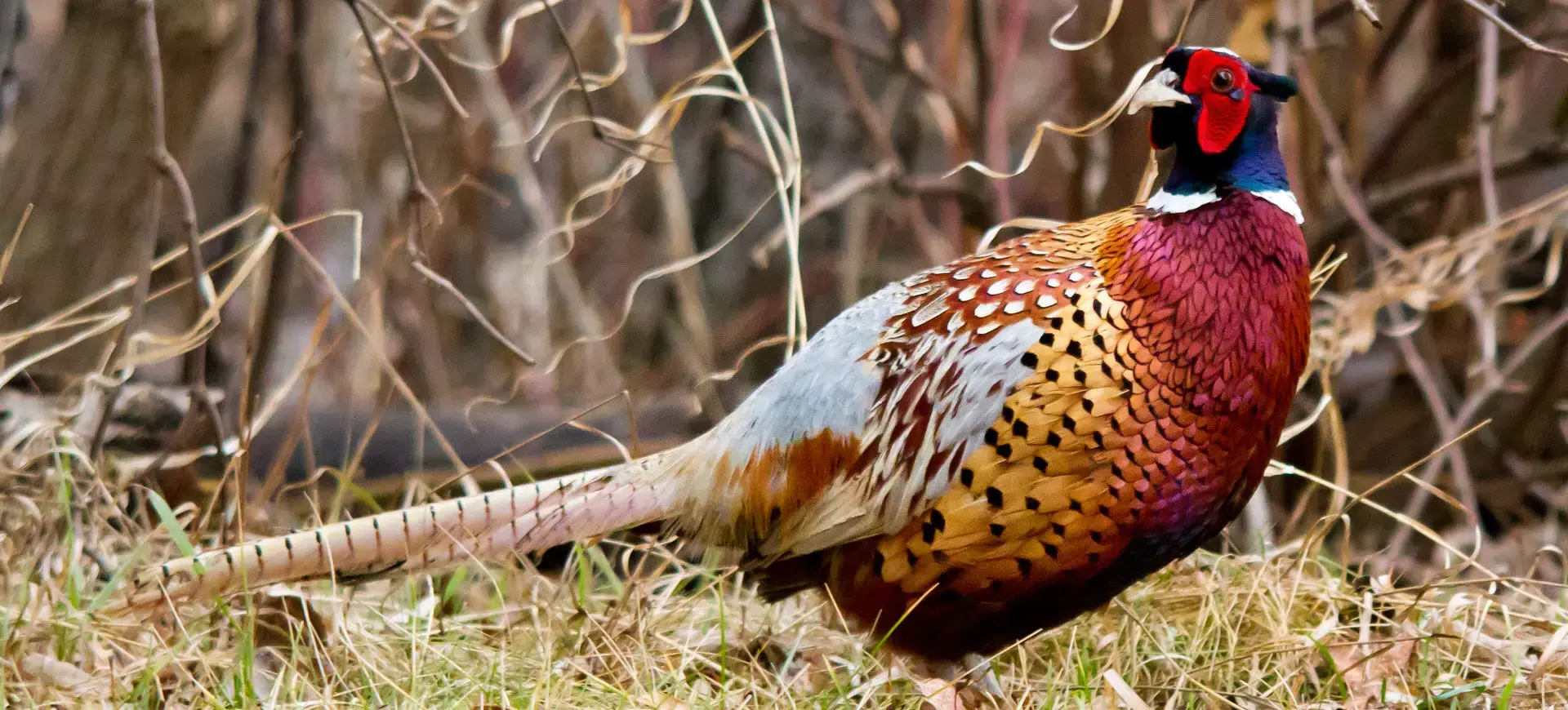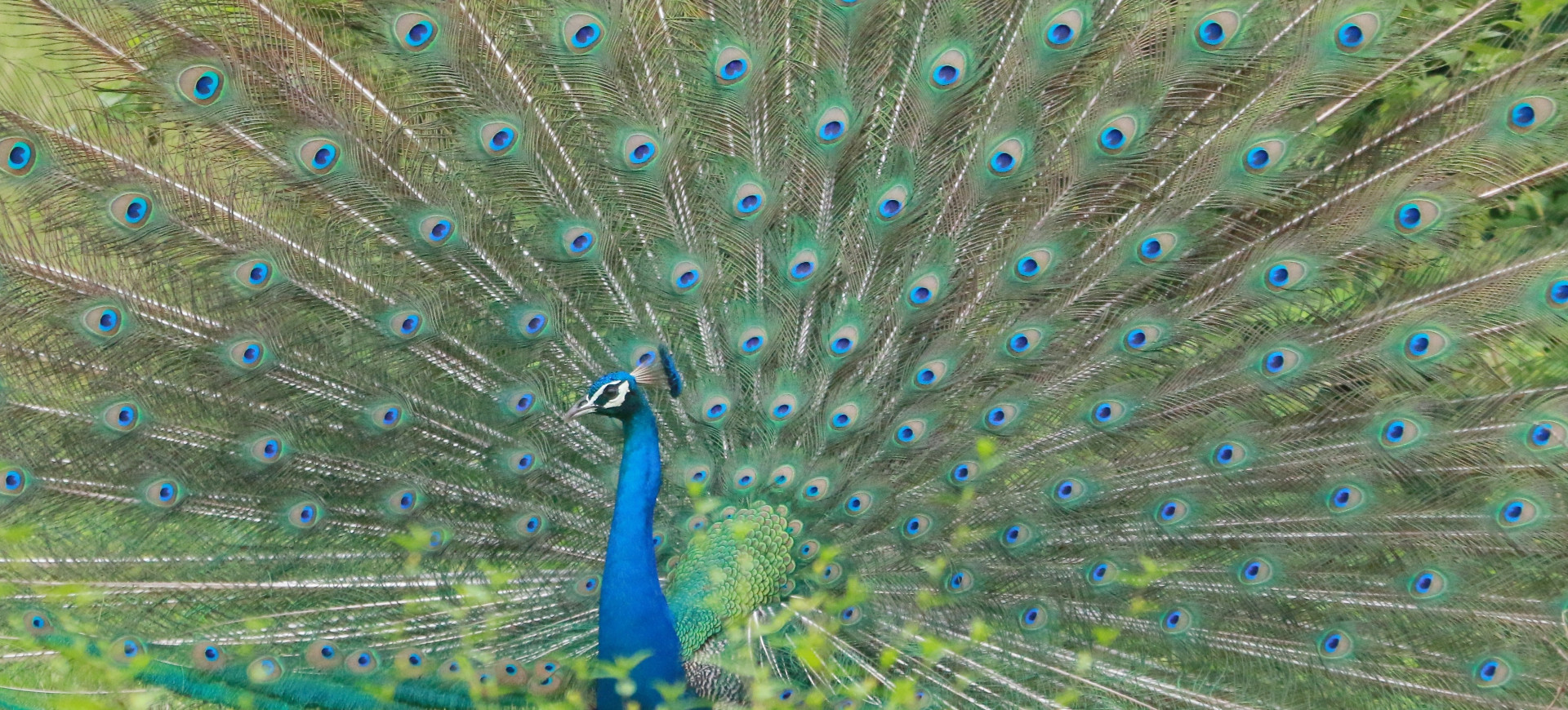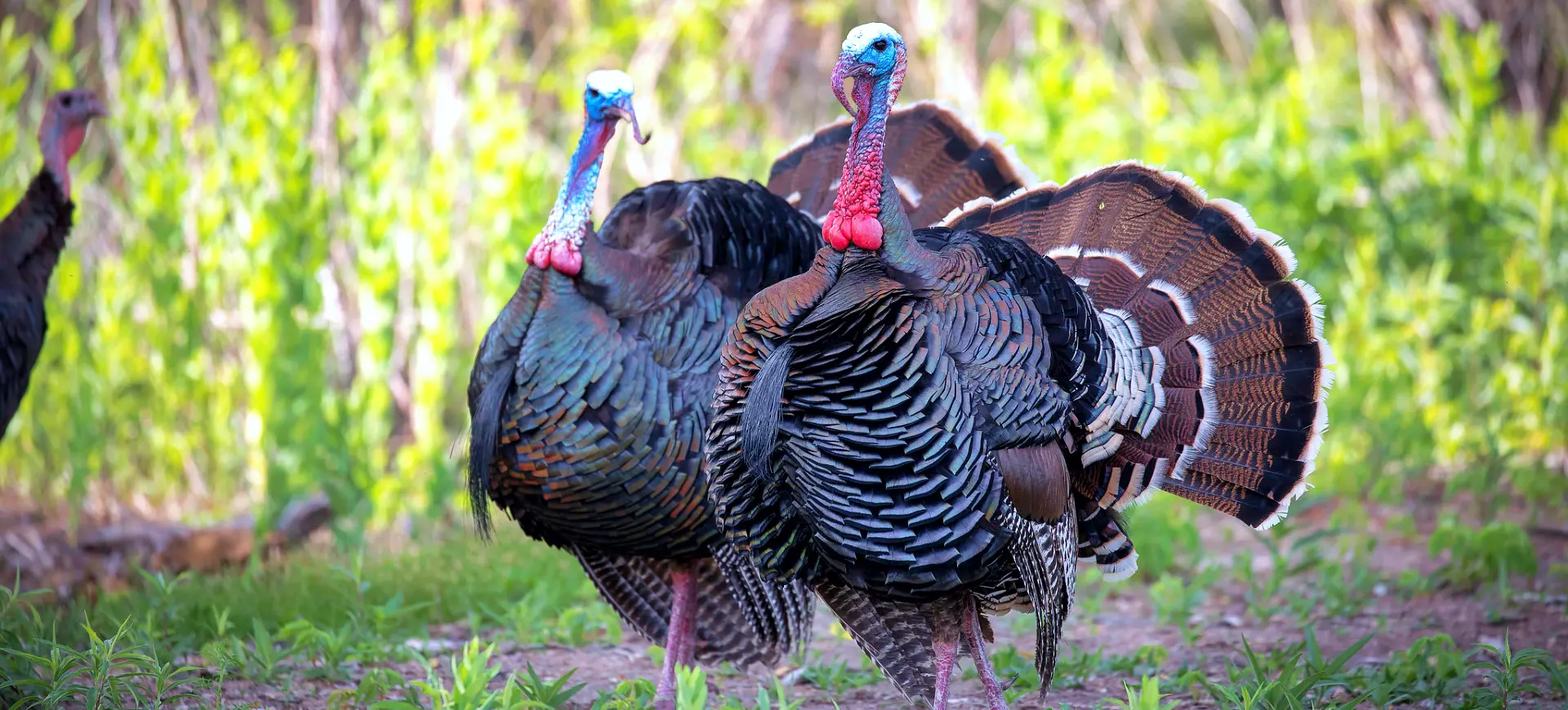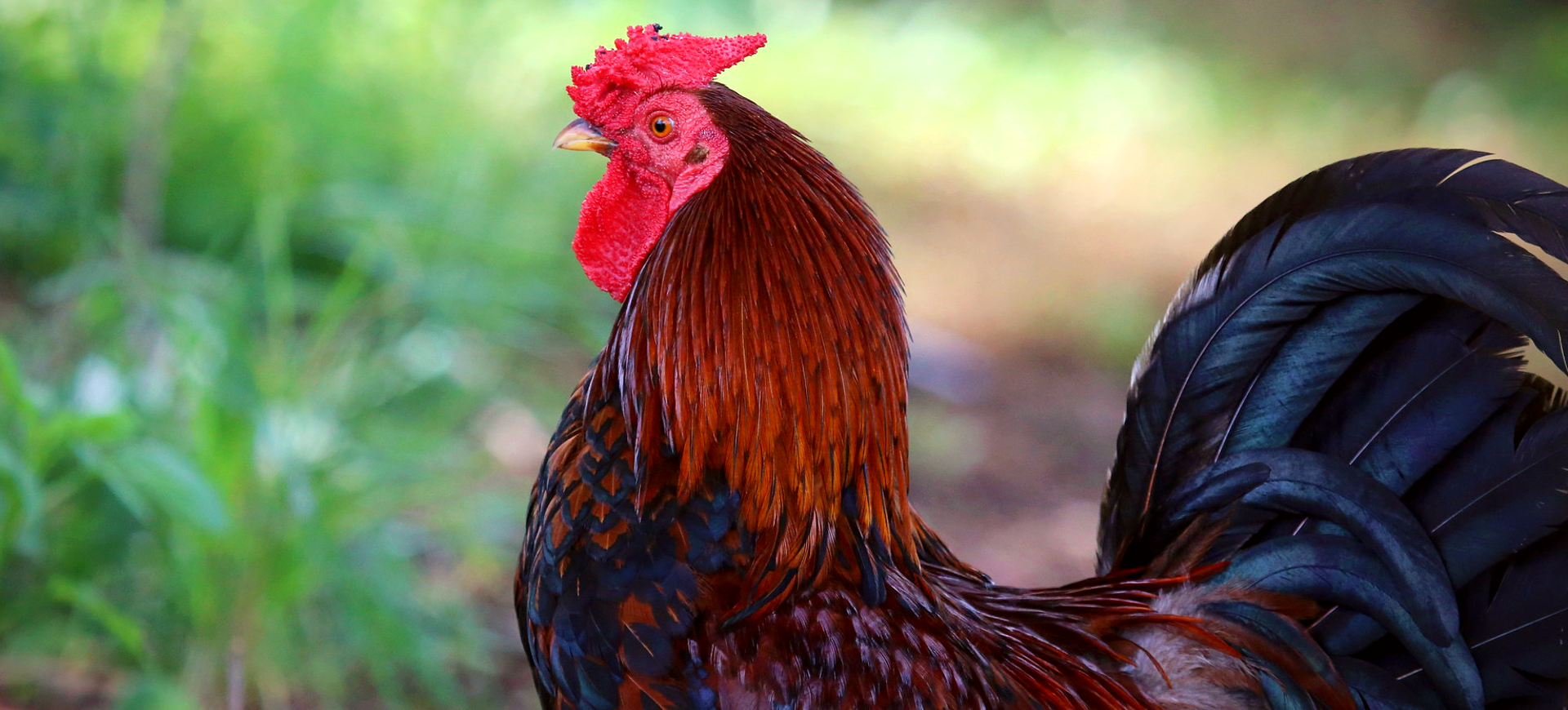Overview
The Golden Pheasant (Chrysolophus pictus) is a striking bird native to the forests and mountains of western China, with introduced populations in various parts of the world. This species is renowned for its brilliant plumage; males display an array of colors, including a golden-yellow crest, red underparts, and a deep green back, while females are predominantly a more subdued mottled brown, providing them with camouflage in their natural habitat. Golden Pheasants are ground-dwelling birds, though they roost in trees at night. They have a shy nature, often seen foraging for food in dense underbrush, making them elusive despite their bright colors.
Golden Pheasants play a role in their ecosystem by dispersing seeds and controlling insect populations through their diet, which consists of grains, leaves, and invertebrates. They are known for their distinctive courtship display, where the male spreads his tail and shows off his plumage to attract a mate. Despite their widespread popularity in aviaries worldwide, Golden Pheasants face threats in the wild from habitat loss and degradation. Conservation efforts are essential to protect the natural habitats of these birds and ensure their survival in the wild.
The adaptability of the Golden Pheasant to various environments has contributed to the success of introduced populations outside their native range. However, preserving their natural habitats in China remains critical for maintaining genetic diversity and ecological balance. The beauty of the Golden Pheasant has made it a symbol of good fortune and beauty in various cultures, further increasing interest in its conservation. Efforts to study and protect this species contribute to our understanding of avian biodiversity and the importance of habitat conservation.
Taxonomy
Kingdom
Phylum
Class
Order
Family
Genus
Species
Type
Physical Description:
Male Golden Pheasants are among the most visually striking pheasant species, with a bright golden crest and ruff, contrasting red body, green upper back and tail, and blue-black wing primaries. The tail is long and prominently marked with black and cinnamon bars, contributing to the bird’s distinctive silhouette. Females, in contrast, are much less conspicuous with their mottled brown plumage, which effectively camouflages in their natural forest floor habitat. Both sexes have yellow legs and bills, with males also displaying a unique red patch around their eyes.
The vivid plumage of the male Golden Pheasant serves as a key feature in courtship displays, used to attract females during the breeding season. Despite their bright colors, these birds can be surprisingly difficult to spot in their native habitat, blending into the underbrush and forest edges. Golden Pheasants are relatively small birds, with males measuring up to 105 cm (41 in) in length due to their long tails, while females are significantly shorter. Their physical adaptations, including strong legs for scratching the forest floor for food, highlight their role as ground-dwelling birds within their ecosystem.

Lifespan: Wild: ~5 years || Captivity: ~15 years

Weight: Male & Female: 1.2-1.5 lbs (550-700 g)

Length: Male: 38-40 inches (96-101 cm) || Female: 24–31 inches (60–80 cm)

Wingspan: Male & Female: 27-29 inches (68-74 cm)
Characteristic:
Native Habitat:
Golden Pheasants are indigenous to the mountainous regions of central China, where they inhabit dense forests and bamboo thickets at altitudes of up to 1,500 meters (4,920 feet). These habitats provide ample cover and food resources, essential for the survival of this species. The thick underbrush and forested environment play a crucial role in their life cycle, offering protection from predators and natural materials for nest building. The conservation of these habitats is vital for preserving Golden Pheasant populations, as deforestation and habitat fragmentation pose significant threats to their survival.
Efforts to protect and restore the natural habitats of the Golden Pheasant are essential for ensuring the species’ future. The establishment of protected areas and national parks in their native range has helped to safeguard vital breeding and foraging grounds. Research into the habitat preferences and ecological requirements of Golden Pheasants aids in developing effective conservation strategies. Reserving these forests benefits the Golden Pheasant and supports the region’s biodiversity, underscoring the importance of habitat conservation efforts.
Climate Zones:
Biomes:
WWF Biomes:
Biogeographical Realms:
Continents:
Countries:
Diet:
Diet & Feeding Habits:
Golden Pheasants are omnivores with a diet that includes a variety of seeds, leaves, grains, and invertebrates. They forage on the ground, using their strong bills and feet to scratch and peck at the forest floor, uncovering food items hidden beneath the leaf litter. In the wild, their feeding habits contribute to the dispersal of seeds, aiding in the regeneration of their forest habitat. During the breeding season, the intake of protein-rich invertebrates increases, providing essential nutrients for egg production and the growth of chicks.
In captivity, Golden Pheasants are often fed a commercial pheasant or game bird feed diet, supplemented with grains, greens, and live food to mimic their natural diet. Their ability to adapt to a varied diet has facilitated the success of captive breeding programs and the establishment of introduced populations. The natural foraging behavior of Golden Pheasants, including their search for food under dense vegetation, highlights their adaptation to the forested environments they inhabit. Protecting their natural food sources through habitat conservation is crucial for maintaining healthy wild populations.
Mating Behavior:
Mating Description:
The mating season for Golden Pheasants occurs in the spring when males perform elaborate displays to attract females. These displays involve the male fluffing up his bright plumage, spreading his tail feathers, and emitting calls and whistles. After mating, the female builds a nest on the ground, often in dense vegetation, where she lays a clutch of 8-12 eggs. She is solely responsible for incubating the eggs over 22-23 days when she relies on her camouflage to protect herself and her nest from predators.
The chicks are precocial, able to walk, feed, and leave the nest shortly after hatching, although they remain under the mother’s care for several weeks. This early independence is crucial for survival in the wild, allowing them to quickly learn essential foraging skills and evade predators. The monogamous or polygamous nature of Golden Pheasants in the wild can vary, with some males mating with multiple females during the breeding season. Conservation efforts that ensure the availability of suitable nesting sites and protect against predation are important for the reproductive success of Golden Pheasants.
Reproduction Season:
Birth Type:
Pregnancy Duration:
Female Name:
Male Name:
Baby Name:
Social Structure Description:
Golden Pheasants are generally solitary or found in pairs during the breeding season, with some forming small groups outside of this period. Their social interactions are most notable during the breeding season when males display to attract females and establish territories. The structure of these territories and the density of populations can be influenced by habitat quality and availability of resources. In captivity, Golden Pheasants can be more gregarious, often kept in groups exhibiting various social behaviors.
The social behavior of Golden Pheasants, including their mating displays and territoriality, plays a crucial role in their reproduction and survival. Understanding these behaviors is important for managing wild and captive populations effectively. Conservation efforts that protect and enhance their habitat contribute to the stability of social structures and the overall health of Golden Pheasant populations. Studying their social dynamics in native and introduced habitats provides insights into their adaptability and the impacts of environmental changes.
Groups:
Conservation Status:
Population Trend:
The Golden Pheasant is currently listed as Least Concern by the IUCN, though this status does not imply that they are free from threats. In their native habitat, habitat loss and degradation are the primary concerns, while in introduced ranges, the impact on local ecosystems and competition with native species are considerations. Conservation efforts in China focus on habitat preservation and the restoration of degraded forests to support stable populations of Golden Pheasants. In areas where they have been introduced, management strategies aim to monitor their impact and, where necessary, control their numbers to protect native wildlife.
The global interest in Golden Pheasants, partly due to their striking appearance, has led to their popularity in captivity, which, while ensuring the species’ survival, also emphasizes the need for responsible breeding practices to maintain genetic diversity. Conservation programs that include habitat protection, research, and public education are essential for preserving Golden Pheasant populations. The involvement of local communities in conservation efforts and the promotion of ecotourism can provide economic incentives for the protection of Golden Pheasants and their habitats. Through these efforts, there is hope for the continued survival and prosperity of Golden Pheasants in both their native and introduced ranges.
Population Threats:
Golden Pheasants face several threats in their native habitat, including deforestation, habitat fragmentation, and agricultural expansion, which reduce their available living space and food sources. Illegal hunting and trapping for the pet trade also threaten wild populations despite legal protections. In areas where they have been introduced, Golden Pheasants may compete with native bird species for resources, potentially impacting local biodiversity. Climate change presents an additional challenge, altering their habitat and affecting food availability.
Conservation measures are focused on addressing these threats through habitat conservation, legal protection, and sustainable land use practices. Efforts to combat illegal hunting and the pet trade include enforcement of wildlife laws and public education campaigns. Managing introduced populations to minimize their impact on native ecosystems is also a priority. Protecting the Golden Pheasant requires a comprehensive approach that balances conservation needs with human interests.
Conservation Efforts:
Conservation initiatives for the Golden Pheasant include establishing protected areas in their native range to preserve critical habitats. Reforestation and habitat restoration projects aim to reverse the effects of deforestation and habitat degradation. Captive breeding programs, particularly in zoos and aviaries, play a role in conserving genetic diversity and can support reintroduction efforts where appropriate. Public education and community involvement are key to raising awareness of the Golden Pheasant’s plight and garnering support for conservation measures.
Research into the ecology and behavior of Golden Pheasants provides valuable insights for conservation planning and habitat management. International cooperation enhances the effectiveness of conservation efforts, particularly in managing introduced populations and protecting migratory routes. Promoting ecotourism offers a sustainable economic incentive for local communities to participate in conservation efforts. Through these measures, there is hope for the long-term conservation of the Golden Pheasant and the preservation of their habitats for future generations.
Additional Resources:
Fun Facts
- Golden Pheasants can have short, fast flights but prefer to run from danger when possible.
- The male’s vibrant colors are among the most spectacular of any bird species, making them a favorite subject of photographers and bird watchers.
- Golden Pheasants can be surprisingly difficult to spot despite their bright plumage in their natural habitat, thanks to their ability to blend into the underbrush.
- They have been featured in art and culture for centuries, symbolizing beauty and good fortune in many societies.
- Golden Pheasants can produce various sounds, from harsh, barking calls to softer, melodic whistles.
- The lifespan of Golden Pheasants in the wild is often shorter than in captivity due to predation and habitat challenges.
- Thanks to their hardiness and striking appearance, they are among the most popular pheasant species kept in aviaries.
- Golden Pheasant chicks are born with a duller coloration than adults, gaining their full colors as they mature.
- In the wild, Golden Pheasants often bathe in dust to maintain their feather condition and rid themselves of parasites.
- The Golden Pheasant has inspired numerous myths and legends in China, where it is considered a symbol of prosperity and beauty.






